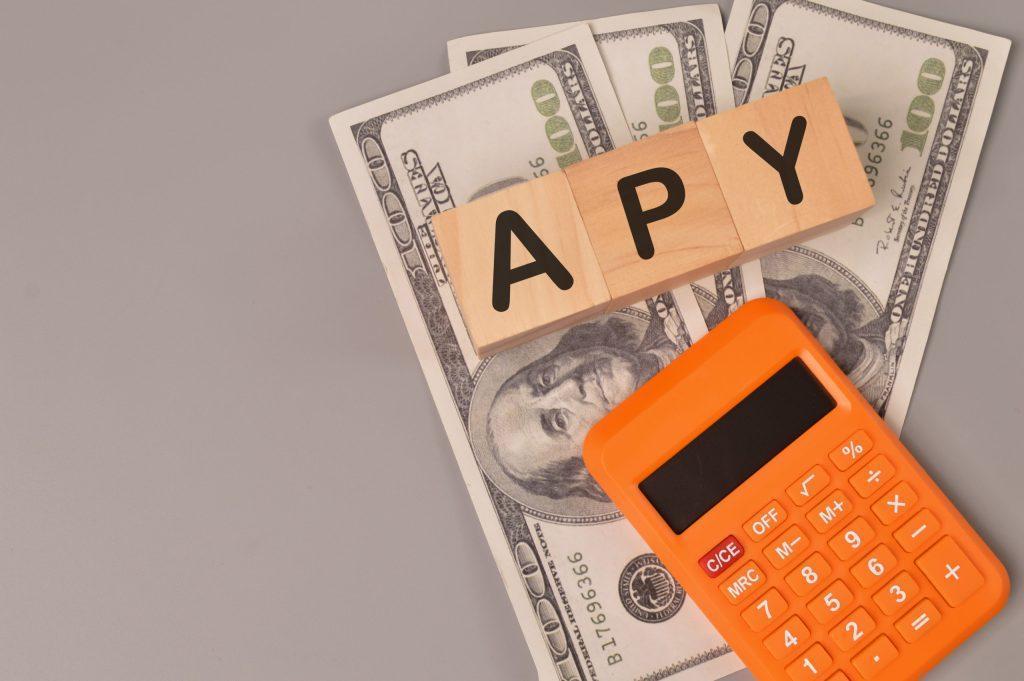APY stands for Annual Percentage Yield, the percentage return on your money. It’s an excellent way to compare different banks’ accounts because it accounts for compounding interest. Understanding how APY is calculated is key if you want to be a savvy investor. You might have heard some people say that an interest rate is “really” X% when they’re talking about how much money you’ll make within a year – that’s APY. But what does that really mean? Read on to understand how does APY work, how to calculate annual percentage yield, and what that means for your money.
What is APY?
APY is a way of expressing the interest you make on the interest of an investment. It’s calculated by considering the percentage of interest you make and how frequently it accrues.
To find what the APY is on investments, multiply the annual interest rate by the number of times interest is made in a year and then divide that number by one.
For example, $1,000 put into an account with an annual interest rate of 5% would, in theory, earn $50 at the end of the year. However, if the rate is 5% with interest earned monthly, the APY would actually be 5.116%, earning you $1051.16 by the end of the first year. This is a simple example with a small number, but it’s easy to see the potential on large investments.
How to Calculate APY?
So, how is APY calculated? One of the easiest ways to understand how to calculate annual percentage yield is to simply break down the formula:
APY= (1+r/n)-1
Where:
r = Annual interest rate (as a decimal)
n = the number of times your product calculates compound interest in a year (e.g., 12 for monthly or 4 for quarterly).
The good news is you don’t need to calculate your APY by hand. There are many calculators that do a good job. What matters is that you understand how it all works.
APY vs APR
APY and annual percentage rate (APR ) are both measures of interest. You’ll see them both appear on your credit card statement. They have the same primary objective – they tell you the rate you can expect interest to accrue on your money if you keep it in that account for a year. The difference is in how each is calculated:
APR takes into account only the interest rate for a single year without any compounding of interest or other fees that could affect the overall earning potential of the account. (For example, with an APR of 20%, a $1000 balance will accrue $200 in interest over one year.)
APY also considers any fees, compounding interest, and other variables for an account. As a result, it’s a more comprehensive measure of how much money will truly grow, given all its different factors.
Example of APY
Let’s go a step further. What does APY look like in practice? Imagine you have an investment account with $10,000 in it. You’re trying to pick the right place to put your money, so you look into APY figures. You have two options that are holding your attention.
- 5% that compounds quarterly
- 4% that compounds every month
Which is better? Calculate annual percentage yield to find out:
- Option 1 gives you a balance of $10,509.45 at the end of the first year.
- Option 2 will give you $10,407.42 at the end of the first year.
So, even though the lower percentage compounds more frequently, the higher percentage gives you better results. You need to be sure to look at how often is APY compounded in addition to the rate of interest being earned to get a clear look at earning potential.
Compound Interest Explained
With all this talk about compound interest, we should dive into what that means.
Compound interest is the interest you earn on your interest. It’s a powerful tool that can grow your money substantially, but it’s not often discussed.
Compound interest is important because it’s essentially how money grows without you having to do anything. For example, if you put $1 in a savings account earning 5% compound interest annually, after one year, you’ll have $1.05. After two years, your money will have grown by 5%, so you’ll have $1.105; after ten years, it will have increased by 100%, so you’ll have $2. Again, simple examples but it’s easy to see how impactful this can be on large sums.
Final Thoughts
Why is it important to know concepts like what is an annual percentage yield? It’s essential to understand how different aspects of investing can have an impact on your money. Knowing about APR and understanding compounding interest means you can compare any financial and investment opportunity so you can make the most on your assets.
APY at HFS FCU
Now that you know a little more about APY, you’re ready to take a serious look at real investment opportunities, and HFS FCU can help.
Contact us today. We’ll show you safe accounts that have competitive APYs. Learn about IRAs, Money Manager, Share Certificates, and more.

